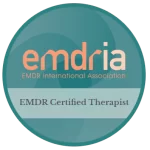I offer tele-health counseling sessions using SimplePractice Video as a secure, HIPAA-compliant platform. An email containing a tele-health link will be sent to you before our scheduled session. No download will be necessary if you are using a computer or iPad.
Please note that tele-health counseling may not be a good fit for all people and may not be an appropriate modality for all issues and situations. We can talk about this during our Introduction Session and, if I do not think tele-health counseling will be appropriate for your symptoms or situation, then I will discuss that with you then and will help you find a referral.
Adults (Age 18+)
CBT focuses on helping people identify their “thinking, feeling & doing” connection. Identifying thought patterns that influence emotions and behavior is essential for change.
These interventions include tools to calm the mind and body such as mindfulness exercises, deep breathing, self-compassion, etc.
MI uses techniques to encourage deep reflection and helps people find their own motivation to change or try something new. I may ask you, “What would have to happen for you to …?”
Naturally, when people come for counseling, they are focused on a negative symptom or problem. SFBT techniques may encourage the person to think in a different direction and focus on what is good in their life, what is going well or remember the last time that things were good or going well (and what has changed). It is very much a strength-based approach that pulls from a person’s past and current resources and is famous for its “Miracle Question.”
Although most of the research for EMDR therapy has been centered on its effectiveness for the treatment for trauma, I find it to be helpful for all issues. In my opinion, EMDR picks up where CBT may fall short. For example, a person may know something logically or rationally, but it may not feel true to them. In other words, there is a disconnect between brain and body. EMDR is a therapy that connects bodily sensations and negative thoughts to past memories or current situations for re-processing. Ideally, EMDR brings a different perspective on a particular memory or situation which, in turn, can change how a person feels about it and aids in healing.
Also known as “parts work.” All people have different “parts” of their personality and there is no such thing as a “bad” part – only part(s) functioning in maladaptive ways. Identifying a conflict between parts or helping part(s) function in more adaptive ways may sometimes help a person resolve internal conflict or mental health symptoms.



